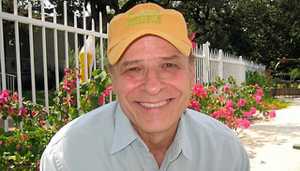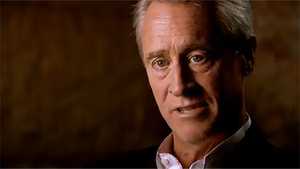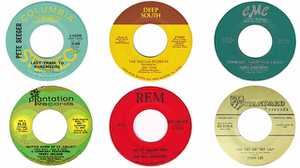The story of the My Lai Massacre, its cover up, and the subsequent investigation involves hundreds of people. Not all the men of Charlie Company participated in the Massacre, and even fewer were ever charged. Read short descriptions of select individuals and the critical roles they played.
Lieutenant William Calley
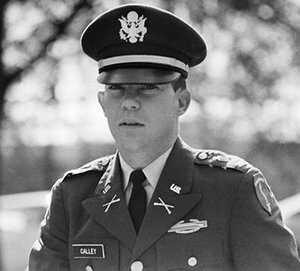
Lieutenant William Calley led the First Platoon of Charlie Company during its service in the Quang Ngai province in Vietnam. After completing basic training at the age of 23, Calley was transferred to Washington to work as a clerk-typist in late 1966. In March of 1967, he was accepted into Officer Candidacy School and underwent six months of junior officer training before his promotion to Lieutenant. Despite his high rank, his men reported feeling resentful towards Calley, and many members of Charlie Company witnessed Captain Ernest Medina treat the Lieutenant with hostility and disrespect.
On the morning of March 16, 1968, Calley commanded the first group of men to land at My Lai. It was Calley who gave the order to start killing the civilians, in action he later defended as adherence to clear orders. On June 5, 1969, Calley was recalled to the United States and identified as a suspect in an official army inquiry. Three months later, he was charged with six counts of premeditated murder.
Lieutenant Calley was the first to be court-martialed beginning on November 10, 1970, providing the country with the first public insight into the operation at My Lai. After more than four months of trial and almost 80 hours of deliberation, the jury found Calley guilty of the premeditated murder of 22 civilians. His life sentence, however, was met with nationwide protest, most of whom believed that Calley showed a courageous allegiance to his country. The "Free Calley" movement painted the Lieutenant as the scapegoat for the government's failed policies in Vietnam and influenced the political atmosphere in Washington with effective protests. "The Battle Hymn of Lt. Calley" sold 200,000 copies, 5,000 telegrams were sent to the White House on the subject, flags in Florida were lowered to half mast, Army veterans turned in their medals, and car bumper stickers across the country demanded, "Free Calley."
Under mounting pressure from the public, President Richard Nixon intervened on April 1, 1971, and ordered Lieutenant Calley released from the army stockade and placed under house arrest. Calley's sentence was reduced the following August, and reduced again in April of 1974 when he returned to the stockade. When he was released on parole on November 9, 1974, Calley had served a total of four months in a stockade, despite being found guilty for the deaths of 22 Vietnamese civilians.
On August 20, 2009, Calley publicly apologized for his actions in a speech to the Kiwanis Club of Columbus. He currently lives in Atlanta with his son.
Captain Ernest L. Medina
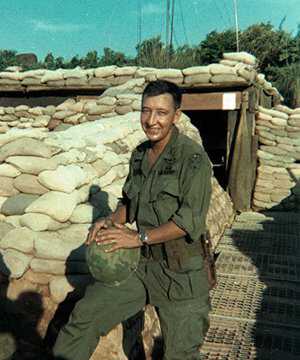
The later investigation into the incident at My Lai revealed that Medina briefed his men on the eve of the 16th. During this meeting he encouraged his men to be especially aggressive on their mission, and he confirmed that no civilians would be present in the village during the ground operation. The morning of March 16, 1968, as the leader of Charlie Company's 3rd Platoon, Medina reported directly to Lieutenant Colonel Frank Barker.
Although his exact actions during these morning hours are still disputed, according to the Criminal Investigation Department (CID), more than 300 Vietnamese civilians were killed under Medina's leadership. A few soldiers reported Medina directly killing civilians on three separate occasions and abusing noncombatants on other occasions. The CID would also report that Medina participated in reporting inaccurate civilian death counts after the fact.
On March 10, 1970, immediately following the conclusion of the Peers Inquiry, the Army charged Captain Medina with assault with a deadly weapon and premeditated murder. His court martial occurred over the course of the summer.
On September 22, 1971, a jury composed of five combat officers acquitted Ernest Medina of all charges due to an overwhelmingly sympathetic courtroom atmosphere and the withdrawal of key witness Michael Bernhardt. Despite his exoneration, the Army denied Medina a long-promised promotion to Major. After the war, Medina moved to Michigan to work at a helicopter manufacturing company. Although he never spoke publicly about My Lai, Medina acknowledged after his trial that he "had not been completely candid to avoid disgracing the military [and] the United States."
Warrant Officer Hugh Thompson
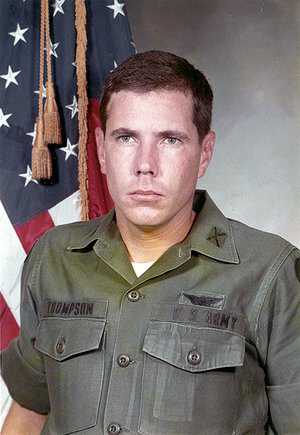
Hugh Thompson, a pilot of the 123rd Aviation Battalion of the 23rd Americal Division, flew an observational helicopter supporting Task Force Barker on March 16, 1968. For his interference during the Massacre and his subsequent reporting of the events to his superiors, Thompson was ostracized by many of his peers but earned respect from others.
After serving in the Navy for three years, Thompson joined the Army in 1966 in hopes of becoming a pilot. Deployed to Vietnam in December of 1967, Thompson flew an OH-23 Raven helicopter used for flying scout missions. On the morning of March 16, Thompson, along with door gunners Glenn Andreotta and Lawrence Colburn, flew a scout mission for the ground troops; playing the role of a "Shark," Thompson's job was to draw fire from enemy forces and inform the troops below of the enemy's location.
Twenty minutes into his operation, Thompson chased several armed men, presumed to be Vietcong. This would be the only enemy that Thompson encountered all day.
As the ground operation commenced and American troops opened fire, Thompson marked the positions of various wounded civilians around the village of Son My with smoke grenades and radio calls for medical assistance. After one refueling trip, however, Thompson and his crew observed that the civilians he had marked with smoke had now been shot dead. Hovering above another wounded woman on the ground, Thompson watched as a soldier approached, prodded the woman with his foot, and shot her in the head.
Shocked by this illegal behavior, Thompson came across another group of civilians guarded by a soldier. In an unprecedented and unauthorized move, he landed his helicopter and appealed to a soldier to help the civilians. The soldier responded that he was "putting them out of their misery," and shot the group down moments after Thompson's departure. Landing his helicopter a second time, Thompson ordered Andreotta and Colburn to train their guns on the members of Charlie Company who were in pursuit a group of 12 to 15 Vietnamese women, children, and elderly men. Calling in assistance from other nearby choppers, Thompson and his men brought the group to safety four miles away.
By 11:15 that morning, Thompson's helicopter had returned to the base. Enraged by the morning's events, Thompson confronted his section leader about the atrocities he had seen and that could still be going on. By noon, Thompson had filed an action report with the company commander, Major Fred Watke.
Following the operation at My Lai and Thompson's vocal dissention, the army sent him out in increasingly dangerous situations. In an 11-day period, Thompson's helicopters were shot down four times. The fifth time Thompson was shot down, during a mission from Da Nang to an airbase at Chu Lai, the fall broke his back and he narrowly escaped death from nearby Vietcong. In April, Thompson was awarded the Distinguished Flying Cross for his actions at My Lai, a document he threw away.
In the summer of 1968, Thompson returned to the United States to recuperate from his broken back. After the initial investigation by Colonel Wilson, Thompson was presented with a lineup on June 13, 1969 and asked to identify the officer he argued with when he landed the helicopter the first time. Thompson identified Lieutenant Calley as this man. In the following months, Thompson was called before the U.S. Senate, the Department of the Army Inspector General, and the Peers Commission to give testimony about the events during and after My Lai. In recent memory, Thompson has been praised as a hero, though during the cover-up, investigation, and especially the court-martials of those charged, Thompson was demonized and berated for committing unpatriotic acts and undermining authority.
In March 1998, Hugh Thompson was awarded the Soldier's Medal for his courage and valor. He died on January 6, 2006.
Door Gunner Ronald Ridenhour
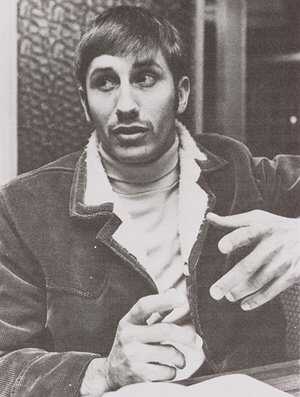
Ron Ridenhour was a door gunner for the 11th infantry brigade, but stationed more than 30 miles south of My Lai during the spring of 1968. Many of his close friends who were there, however, told Ridenhour the story of what happened on March 16, and he became intent on finding and exposing the truth. Today, many people give Ron Ridenhour credit for bringing the Massacre to light both in Washington and in the public.
Ron Ridenhour was drafted in March of 1967 and received basic training, advanced infantry training, and parachute training. Sent to Hawaii in September to train with the 11th infantry brigade, he developed friendships with many soldiers who would go on to comprise Charlie Company. Ridenhour was assigned to the long-range reconnaissance patrol unit (LRRP) as a door gunner and was deployed to Vietnam on December 21, 1967.
Throughout his year of service in Vietnam, Ridenhour witnessed horrific events on the ground below his helicopter "shark." In mid-April of 1968, Ridenhour ran into a former fellow trainee, Private Butch Gruver, who told him that Charlie Company had shot and killed more than 400 civilians the month before. Ridenhour had seen the murder of helpless civilians himself, but when he heard about what happened at My Lai, he knew this was a much larger scale.
Later that month, Ridenhour heard accounts of the incident from two other members of Charlie Company, and he searched fruitlessly for an official report on My Lai. In June, Larry LaCroix told Ridenhour about Lieutenant Calley's involvement in gunning down civilians by the east ditch.
Ridenhour began to hear the name of Private Michael Bernhardt repeatedly as one who had refused to participate in the killing at My Lai. After four months trying to locate him, Ridenhour tracked Bernhardt down at a surgical hospital in Chu Lai where he was being treated for extensive jungle rot. From his hospital bed, Bernhardt told Ridenhour that he was approached after the massacre by Captain Medina and threatened to keep quiet. Bernhardt claimed he was then treated with blatant carelessness with his life; he was sent to the front of the line whenever they faced enemy fire and was denied multiple applications for a transfer. Bernhardt's testimony further pushed Ridenhour's conscience, and he vowed to bring these events to light.
After being discharged from the Army on December 1, 1968, Ridenhour returned home to Phoenix where he continued to independently gather information about the events of March 16th. On March 18, 1969, Ridenhour wrote a letter presenting all the evidence he had found of a massacre at My Lai, and sent it to 30 prominent figures in Washington. Ridenhour's forcefulness and the eloquence of his letter caught the attention of Rep. Morris Udall, who forwarded the letter to the Army's Chief of Staff, General William Westmoreland.
The Ridenhour letter catalyzed two official investigations — one into the events at My Lai and one into the attempts at a cover-up. These investigations, conducted over the subsequent year, resulted in charges to 14 officers.
Ridenhour died of a heart attack on May 10, 1998.
Sergeant Ronald Haeberle
Sergeant Ron Haeberle, an army photographer assigned to follow Charlie Company on March 16, 1968, arrived at the hamlet of My Lai 4 at 7:30 a.m., about 10 minutes after the first platoon of troops. Unlike his comrades' triple loads of ammunition, Haeberle was armed only with two cameras — an Army standard for official pictures, and his own for personal use. As the morning progressed, Haeberle walked through the village taking pictures of what he saw for Army documentation and publication in hometown newspapers.
Haeberle took a few rolls of pictures in My Lai that morning. The black and white photographs from his Army camera primarily depicted soldiers interrogating villagers and burning huts. The color images from his personal camera were more graphic, showing piles of bodies and children who had been shot to death. In one of the most well-known photographs from that morning, a small group of Vietnamese woman and children huddles together defensively. Seconds after Haeberle took the picture, every subject was shot down and killed, according to his later court testimony. Throughout that morning, Haeberle witnessed about 100 civilians killed. His photographs capture many of these deaths.
Following the operation at My Lai, Ron Haeberle submitted the black and white rolls to the Army. The pictures from his personal camera, however, he kept for himself, later explaining that he believed they would have been destroyed had they been turned in alongside the official Army photos.
After his discharge from the army, Haeberle returned to his home in Ohio but continued to be haunted by the images he brought back with him. He organized a slideshow of his pictures in order to convey a picture of his war experience, and showed them to different clubs, associations, and even a high school. By August, 1969, Haeberle's slides had been seen by over 600 people.
That November, a selection of Haeberle's personal photographs were published in the Cleveland Plain Dealer showing dozens of Vietnamese civilians -- many women and children -- lying dead or merely seconds from death. These photographs became the proof used in the Peers Commission, backing up the stories of Hugh Thompson and others who had described civilian murders that day in My Lai.
Forty years later, in November of 2009, Haeberle admitted to destroying his most graphic personal pictures depicting soldiers in the act of killing in an attempt to prevent the identification and persecution of additional soldiers. "I had actual photos of actual guys who were doing the shooting and stuff like that. I never showed those... I was there in the operation, but I'm not gonna point a finger at some soldier out there and have him, you know, put up. We were all guilty."
Seymour Hersh
Investigative reporter Seymour Hersh was the first to break the story of the My Lai Massacre in the American press. A freelance writer during the Vietnam War, Hersh received a tip that a Lieutenant was being court-martialed for killing Vietnamese civilians. His curiosity piqued, Hersh sought out Lieutenant Calley at Fort Benning and landed an interview with him on November 11, 1969. The story about a possible massacre of Vietnamese civilians by American soldiers was sold to Dispatch News Service, was published in 35 papers two days later.
The story quickly spread to newspapers and broadcast nationwide, causing a public outcry over the potential massacre and lack of a military follow up. The push for answers gave photographer Ronald Haeberle courage to publish his personal photos from that morning, providing concrete evidence of Task Force Barker's misdoings.
In 1970, Seymour Hersh won the Pulitzer Prize for International Reporting for his My Lai story and went on to write for the New York Times. He is known for his 1975 investigations into the CIA's Project Jennifer and for reporting on the U.S. military's mistreatment of detainees at Abu Ghraib prison in May of 2004.
Colonel William Wilson
William Wilson was asked by the Office of the Inspector General to conduct an inquiry to determine if Ron Ridenhour's letters to Washington, D.C. had any merit. A World War II Green Beret and Purple Heart recipient, Colonel Wilson was regarded as a highly respected, "no nonsense" combat veteran.
Wilson held face-to-face interviews with the people involved, beginning with Ron Ridenhour at the end of April 1969. On May 2, Wilson interviewed Lawrence LaCroix, who was the first to back up Ridenhour's claim of unnecessary civilian casualties. LaCroix also mentioned that Hugh Thompson had filed a complaint following the operation, a complaint Wilson had heard no previous mention of. Midway through the month, Wilson interviewed Captain Medina, who admitted that Henderson had been directed to conduct an investigation. This information was a red flag to Wilson, who was still unable to locate such a report.
On May 27, Wilson interviewed Colonel Henderson, who initially claimed that his informal investigation revealed nothing alarming, but later in the interview admitted that he handed off the formal investigation to Colonel Barker. The reason the report was missing, he suggested, was due to the disorganization in the Chu Lai headquarters and Barker's death the previous summer.
Wilson interviewed Hugh Thompson in June and Paul Meadlo in July. Private Meadlo was the first to personally confess his guilt. This closed any question in Wilson's mind about Ridenhour's claims, and he presented his findings to the Office of the Inspector General in Washington on July 17th.
With this presentation, additional interviews with Meadlo, and a consultation with the Judge Advocate General in Washington, authorities at Fort Benning decided to press charges against Lieutenant Calley on August 19, 1969.
One month later, General Peers was appointed to investigate the cover up. Peers' investigation led the United States Army to charge more than 25 men for crimes related to the cover-up of My Lai. A separate investigation by the Criminal Investigation Division lead to charges against both Calley and Medina as well.
Lieutenant General William Peers
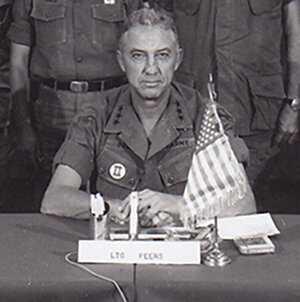
Peers' mission was to explore the military's treatment of the question of the My Lai Massacre up until March of 1969, when Ron Ridenhour's letter jumpstarted the Washington investigation. This assignment was to explore a possible military cover up, not the criminal allegations regarding the incident itself. On November 26, Stanley Resor, the Secretary of the Army, presented the evidence thus far collected proving the existence of wrongdoing at My Lai to the Armed Services Committee of the House and Senate. Among the evidence presented were testimonials from various members of Task Force Barker along with the entire collection of Ron Haeberle's photos.
Peers assembled his 13-person inquiry team on November 27 in the basement of the Pentagon. By mid-December, this small group of investigators grew exponentially as the list of former Charlie Company members under investigation blossomed to 46. From December 3 to 26, the Peers Commission gathered testimony from 39 witnesses, including pilot Hugh Thompson, Captain Ernest Medina, Captain Eugene Kotouc, Major Frederick Watke, Warrant Officer Don Millians, Brigadier General George Young, door gunner Lawrence Colburn, Colonel Oran Henderson and Major General Koster.
On December 26, Peers traveled to Vietnam to locate copies of the formal investigation that both Henderson and Koster insisted existed. During his two weeks in Vietnam, Peers also conducted interviews with U.S. military personnel, American civilian personnel, Vietnamese government officials, officers from the Army of the Republic of Vietnam, and Vietnamese civilians living in Son My. On January 3, Peers flew over the My Lai villages, accompanied by Hugh Thompson.
Returning to the United States on January 8, 1970, Peers picked up the pace; he further expanded his team to 80 men in order to conduct simultaneous witness interviews. The inquiry report deadline was set for March 14, 1970, within the two-year statute of limitations window set from the date of the incident.
During the month of January, the Peers Commission continued to interview Private Paul Meadlo, Sergeant Ron Haeberle, Colonel Howard Whitaker, and many others.
Unable to find an uncontested number of civilians dead, Peers asked the Criminal Investigation Department (CID) to conduct a census of civilian casualties. The census concluded that Charlie Company killed 347 Vietnamese men, women and children during the operation on March 16. Though a lower number than the 504 civilian deaths reported by the Son My village chief, this figure was still significantly elevated from the 90 deaths reported by Captain Medina on the day of the incident. The CID finds Lieutenant Calley's first Platoon responsible for 90 to 130 murders, a third of the total casualties.
On March 7, 1970, the Peers Inquiry finished its 399th and final interview, compiling more than 20,000 pages of testimony. The Report was delivered to Army General Westmoreland on March 14, along with names of 30 people who had suppressed evidence regarding the killing of civilians during the My Lai operation. Because of the two-year statute of limitations on military offenses, the army had only two days to press charges.
General Peers presented his report to the Secretary of the Army and the Army Chief of Staff on March 17, two days after the army pressed charges against 15 officers.
General Peers died in 1984 at the age of 69.
Lieutenant Colonel Frank Barker
The leader of Task Force Barker, Lieutenant Colonel Barker commanded 500 troops from three companies of the 11th Infantry Brigade in a directive to destroy the notorious 48th Battalion of the Vietcong. In February of 1968, the Vietcong was rumored to have retreated into Quang Ngai — specifically the area of My Lai — after the Tet Offensive.
During the operation, on the morning of March 16, commander Barker observed some of the action from a scout helicopter. From this helicopter and from landing zone Dottie, Barker checked in with company leaders at various times throughout the morning, gathering information about the situation and unfolding of events. From these reports, Barker reported he had no cause for alarm; a call from Captain Medina at 8 a.m. indicated that 15 Vietcong had been killed; another at 8:30 a.m. updated that number to 84 enemy killed. After another observation fly-over, Barker ordered the killing to stop.
On March 28, Lieutenant Colonel Barker submitted an official report concluding the mission in My Lai was successful: "This operation was well planned, well executed... Friendly casualties were light and the enemy suffered heavily. The infantry unit on the ground and helicopters were able to assist civilians in leaving the area in caring for and/or evacuating the wounded."
On April 8, Task Force Barker's mission was declared a success and the companies involved were disbanded. Two months later, on June 13, Colonel Barker and Captain Michles (the Bravo Company during the My Lai operation) were killed when their two helicopters collided in midair.
Colonel Oran Henderson
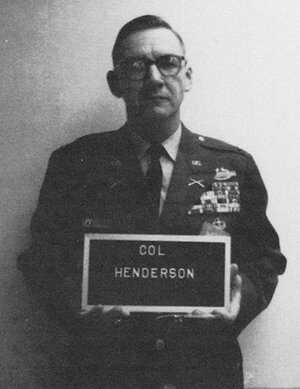
Colonel Henderson was a highly decorated soldier who became inextricably involved with both the planning and subsequent cover up of the My Lai operation. A soldier in World War II, the Korean War, and Vietnam, Henderson had received the Purple Heart four times by March of 1968. Colleagues described Henderson as authoritative and decisive; the Colonel was on track to become a General by the end of the Vietnam conflict.
On March 15, 1968, Henderson took over the 11th Brigade, the parent unit of Task Force Barker, which was slated to go into My Lai the next morning. Henderson addressed the task force, informing the soldiers of the enormous opportunity coming. He told the troops that new intelligence suggested My Lai presented an unparalleled chance to meet the enemy head on. His message was clear: every soldier must be aggressive and merciless towards the enemies that were infiltrating My Lai.
On March 16, during the operation itself, Henderson listened to the ground updates from landing zone Dottie, four miles away. At one point during the morning, he joined a helicopter's crew for a reconnaissance run, during which he claimed to have seen six to eight bodies.
That afternoon, Pilot Hugh Thompson and his gunner Larry Colburn both reported the unnecessary killing of civilians to Henderson. Around 3:30pm, Henderson received a second report of excessive civilian casualties and ordered Captain Medina's company back through the Son My village to gather an exact count. Major General Koster, commander of the Americal Division, however, countermanded this order and told Medina that no further examination was necessary.
On March 18, Colonel Henderson held a crisis meeting in a van at landing zone Dottie accompanied by Brigadier General Young, Lieutenant Colonel Barker, Major Watke and Lieutenant Colonel Holladay. During the meeting, Henderson was instructed to conduct an investigation into the events of the previous day. This investigation was conducted over the next two days and consisted of second interviews with Thompson and two other aviation personnel, a conversation with Captain Medina, and a second fly-over of the My Lai village area. On March 19, Henderson reported to General Young that the investigation yielded nothing suspicious or out of the ordinary.
Released on April 24, Henderson's investigation report stated that 20 civilians had been killed and Thompson's allegations of mass exterminations had been false. On April 25, Henderson then instructed Lieutenant Colonel Barker to conduct a formal inquiry -- an unorthodox assignment since the task force in question was Barker's own. Unsurprisingly, Barker's investigation concurred with that of Henderson.
On February 26, 1971, Henderson was court-martialed for his role in the cover-up of the My Lai Massacre. The highest-ranking officer to be tried, Henderson had a long court-martial (lasting 62 days) that included testimony from more than 100 witnesses. Henderson was acquitted of all charges on December 18.
He died of pancreatic cancer in 1998 after serving many years as Pennsylvania's director of civil defense.
Major General Samuel Koster
Major General Koster was the highest-ranking officer to be officially connected to the My Lai operation. As a Major General, Koster was the superior voice on any decision made in the days following the operation. A graduate of West Point, Koster had earned a Silver Star, Bronze Star, and Legion of Merit in World War II and in the Korean War. In 1967, Koster was appointed commander of the Americal Division, operating in the Quang Ngai province, the most active and volatile part of Vietnam.
Koster was not directly involved with the operation in My Lai until the afternoon of March 16, when he countermanded an order from Colonel Henderson for Captain Medina to get an exact count of civilian casualties. Warrant Officer Thompson's report of misconduct reached Koster at noon on the 17th through Brigadier General Young. At this point, Koster suggested Henderson conduct an investigation, but he did not follow up with Henderson regarding the requirements of a thorough investigation.
The conclusion of the Peers Commission in 1970 indicated that Koster was the motivating force behind the cover up of events at My Lai. When the report was published on March 14, 1970, Koster was at West Point in the role of Superintendent of the United States Military Academy. Formally charged with failure to obey orders and regulations and dereliction of duty on March 17, Koster resigned from West Point and served as a deputy in Virginia until February 26, 1971, when charges against him were dropped.
Ultimately, Koster's only reprimand for his involvement in the cover up came in the form of a demotion from Major General to Brigadier General. Koster was also stripped of a Distinguished Service medal that he had earned for his divisional command in Vietnam. After retiring from the military in 1973, Koster served as deputy commander of the weapons tester Aberdeen Proving Ground in Maryland. He died on January 26, 2006.




